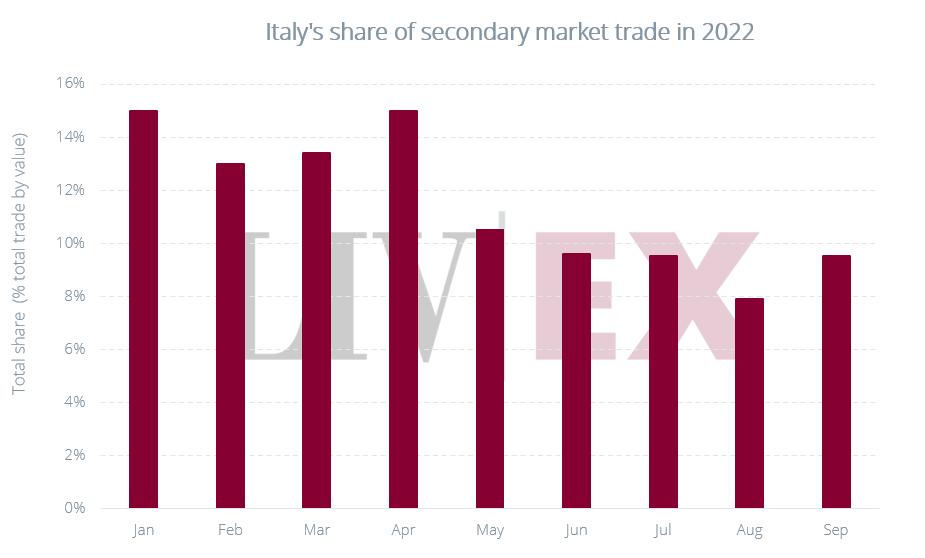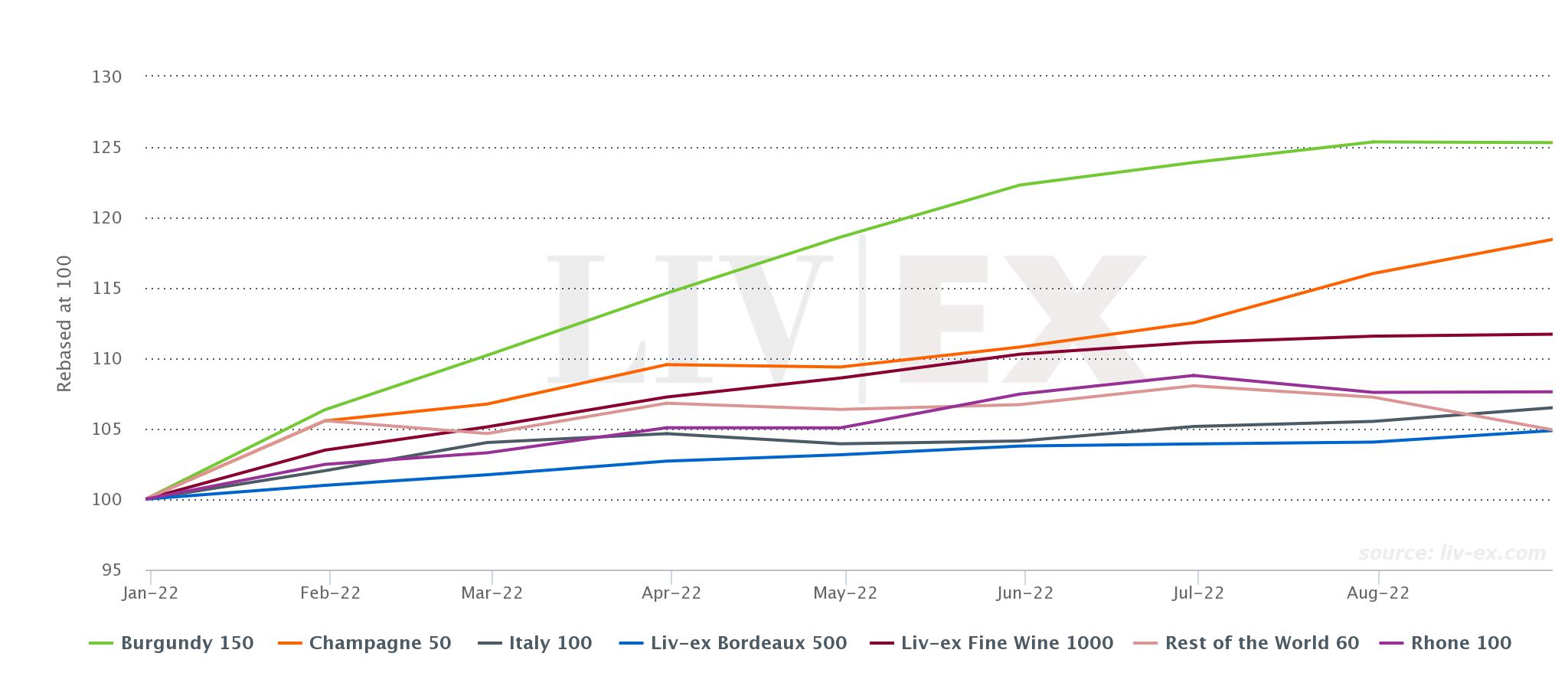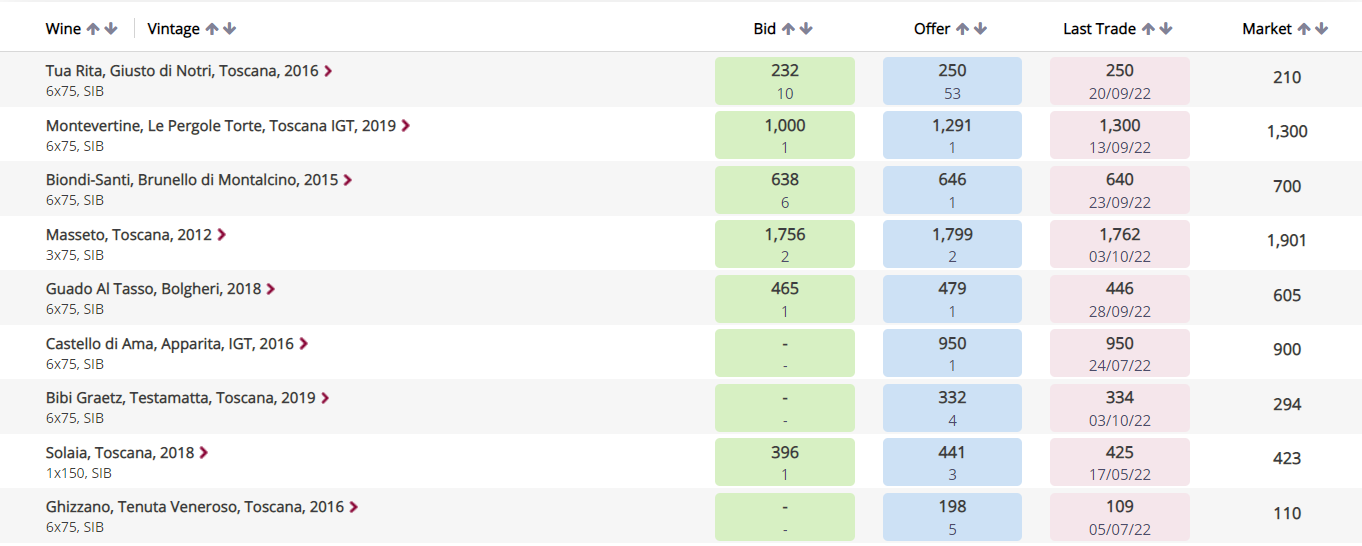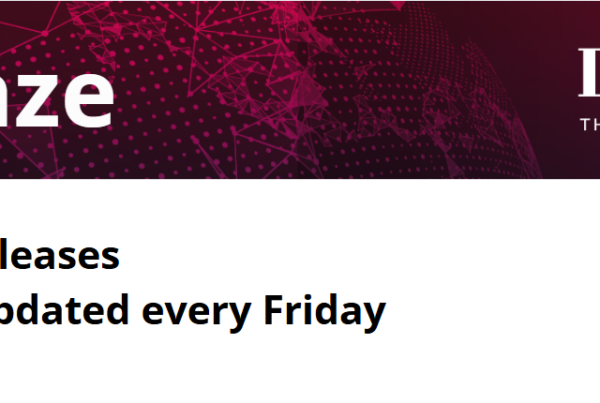Recent trading activity
Activity at the weekend was dominated by Champagne, which took 30.4% of overall trade. Taittinger’s Comte de Champagne 2011 and Jacques Selosse Millèsime 2008 were the leading labels.
Demand for Domaine Armand Rousseau Chambertin 2015 and Domaine de la Romanée-Conti La Tâche 2005 led Burgundy activity, with the region accounting for 22.0%.
Bordeaux was the next most-traded region, with 19.6%. Château Cos d’Estournel 2016 was the top-traded label.
Italy’s declining trade share

Champagne has been a dominant feature of trade throughout the year, but as it has risen to prominence another country has seen its share start to falter – Italy.
The broadening market and exclusion from high import tariffs imposed in the US from 2019-2021, helped drive Italian trade to new highs in the secondary market.
From an 8.8% market share in 2019, it jumped to 15.1% in 2020 and 15.4% in 2021. However, so far this year, total trade is down to 11.8% and as the chart above shows, the country’s monthly share of trade has been trending downwards since May.
As Italy’s trade share has declined, activity has become more focused on a few key labels mostly from Tuscany which has accounted for 57.7% of Italy’s trade so far this year. As reported in August, the Super Tuscans are the key drivers of the Italy 100 index at present.
Year-to-date the Italy 100 index is up just 6.5%. Although it has outperformed the Bordeaux 500 and the Rest of the World 60, it is lagging behind Burgundy and Champagne which are up 25.3% and 18.4% respectively.
Italy is not alone in losing trade share this year, Californian trade has also been on the decline. After a rapid rise over the last three years and with such high demand for Champagne, market interest is firmly elsewhere at present.
On the other hand, a pause can often occur before the market rises once more. Buyers with an eye on the future may wish to consider if now is a good moment to boost their Italian stocks.

*made using the Liv-ex Charting Tool
Opportunities to buy Tuscan wines

There are over 20,000 LIVE opportunities on the exchange at present, including over 1,500 from across Tuscany.
Liv-ex analysis is drawn from the world’s most comprehensive database of fine wine prices. The data reflects the real time activity of Liv-ex’s 600 merchant members from across the globe. Together they represent the largest pool of liquidity in the world – currently £80m of bids and offers across 16,000 wines. Independent data, direct from the market.




